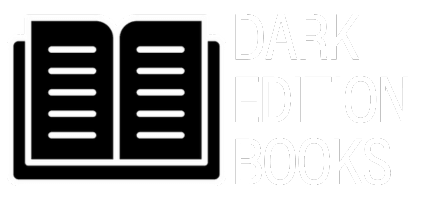
80# Coated vs 60# Uncoated: Which Paper Should You Choose?
Share
When you order from Dark Edition, you'll notice we offer two paper options: 80# coated or 60# uncoated.
Most book buyers have never had to think about paper weight before. So what's the actual difference, and which one should you pick?
Why We Offer Both Options
Printing black pages is different from regular books. We're covering the majority of the page with ink, not just printing text. That means paper (and ink) choice matters more than it does for standard white-page books.
Some readers want the premium feel of thicker, smoother paper. Others prefer a more traditional book texture. Both work—they just create different reading experiences.
We started offering both options because people kept asking for them. No single paper type is "correct." It depends on what matters to you.
80# Coated Paper: The Premium Option
This is the thicker, smoother choice. The coating creates a sealed surface that holds ink exceptionally well.
What it feels like: Smooth to the touch, similar to a high-quality art book or photo album. Pages have subtle weight and substance when you turn them.
Pros:
- Deeper, richer black. The coating helps ink sit evenly, giving you the most dramatic contrast
- Zero show-through. The extra thickness and opacity mean you never see text bleeding from the other side
- More durable. The coating resists fingerprints, smudges, and general wear better
- Feels premium. If you want a book that feels like a collector's item, this is it
Cons:
- Heavier books. Noticeably more weight, especially for longer titles
- Hard to write on. The coating doesn't absorb pen or pencil well—not great if you annotate
- Costs more. The price difference reflects the better material
- Slight glare in bright light. The coating creates a subtle sheen that can catch light. Great for reading indoors or in low light, but can be distracting in direct sunlight
- Smoother texture. If you prefer that classic rough-paper feel, you won't get it here
Best for: Readers who want the most dramatic contrast, people who read primarily indoors or in low light, anyone building a display collection, those who want a book that feels like a collector's item.
60# Uncoated Paper: The Classic Option
This is closer to what standard novels use—lighter weight with an uncoated, slightly textured surface.
What it feels like: Traditional book paper. Matte finish with a bit of tooth to it. More flexible pages.
Pros:
- Natural texture. That familiar paper feel that many readers prefer
- No glare. Matte finish eliminates any sheen or reflection, making it comfortable to read in any lighting
- Better for annotations. Pen and pencil write smoothly if you mark up your books
- More affordable. Lower price point makes it easier to build your collection
- Lighter to hold. Less weight means easier handling during long reading sessions
Cons:
- Less dramatic contrast. The black isn't quite as deep and rich as on coated paper
- Slightly less smooth. The uncoated texture is more traditional but less polished
Best for: Readers who prefer traditional book feel, people who annotate, anyone who reads in varied lighting conditions (especially bright light), those building a larger collection on a budget.
The Show-Through Question
Let's address this directly: will you see text bleeding through from the other side?
No. Both paper options are thick enough that show-through isn't an issue with either choice. Whether you pick 80# coated or 60# uncoated, the pages are fully opaque.
Which One Should You Choose?
Choose 80# coated if:
- This is a gift or a book you want to display
- You're buying your favorite book and want the deepest black and sharpest contrast
- You read primarily indoors or in low-light settings
- You want the most dramatic black-and-white contrast possible
- You don't write in your books
Choose 60# uncoated if:
- You prefer how traditional books feel
- You're buying multiple titles and want to keep costs down
- You annotate or take notes in your books
- You read in bright light or varied lighting conditions
- You like a matte, no-glare aesthetic
Honestly? Both work beautifully. We wouldn't offer an option we didn't believe in.
The 80# feels more special. The 60# feels more familiar. Pick based on how you actually read and what matters to you.
Can You Mix and Match?
Absolutely. Some people buy their favorite titles in 80# and others in 60#. There's no requirement to be consistent across your collection.
We've seen customers order the same book in both paper types just to compare them in person. If you're genuinely unsure, that's an option.
Still Not Sure?
If this is your first Dark Edition book, we'd suggest starting with 60# uncoated. It's more affordable, and if you love the experience, you can always order your next book in 80# to feel the difference.
Or go straight for 80# if you know you want the premium version of a book that matters to you.
Either way, you're getting black pages and white text printed to our quality standards. The paper choice just customizes the experience to your preferences.
